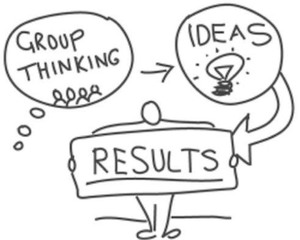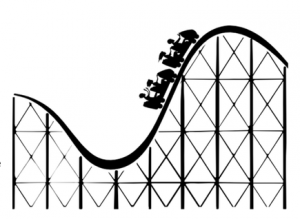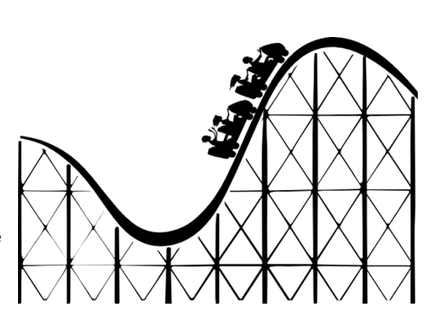by Emily Garcia
Since my second year at Appalachian, teachers have joined their students together to create what is either a very fun, educational, and useful experience or a very poor, frustrating stab at my faith in humanity. At its core, the group project is meant to build and strengthen the collaborative muscles that most career paths require. Feeding off of group members’ ideas can create a project that is more creative, in-depth, and rounded given the extended perspective offered by multiple writers, which is why this method is a popular tool. The final draft of a group paper should sound like it was written by one author, and that is the most difficult part of the process. The group project is an inevitability for Appalachian State students. I typically segment the process into three steps:
- Distribution and assignment of work
- Creation of the piece
- Editing/combining the pieces.
STEP ONE: Assigning the Process
Deciding how to distribute work ahead of time will lead to a clear understanding of expectations and will generally discourage an uneven and unfair distribution of work. This makes it the most crucial step to gain efficient and positive behavior within the group. To begin, I look to a chart provided by the UNC Chapel Hill Group Paper website, which is a great place to look for a more in-depth guide for collaborative writing:

This graphic illustrates a multitude of work-distribution options groups can choose to implement when creating a paper.
Two things should be assessed prior to an ultimate decision:
- The requirements of the paper: length, due date, content requirements, and required and necessary research.
- The strengths and weaknesses of group members.
The first is important because choosing to write the majority of the paper together can prove to be much faster than everyone writing their piece on their own time. Second, assessing individual group members for strengths and weaknesses is critical because there may be one or two members who are much faster writers than others, but they may have weak proofreading abilities. Understanding and appreciating these differences between editors, writers, and planners is key to the collaborative writing process.
STEP TWO: Creating the Piece
Now, depending on the choice of work distribution, creation of the piece can be natural, or it could require a little more tact. If the group decides to distribute chunks of the paper for individuals to write on their own time, little change is necessary, but ensure there is no contradictory language between group members; adequate planning can manage that issue. However, those groups will have a more strenuous editing and combining session. Alternatively, groups that decide to collaboratively write the entire paper together should be aware of a few things.
Some writers can be easily discouraged, so communication within the writing session should be monitored carefully, making sure to never make a member feel inferior to other group members. Truthfully, every idea, even seemingly useless ones, have something to offer the collaborative process. A group member who encourages success should value all input and try to make changes to other members’ ideas rather than discarding them—3M gained a successful and innovative reputation with this philosophy.
STEP THREE: Editing and Combining the Work
 The final step in the process, again, looks different depending on the work distribution that is agreed upon. When combining the paper, be sure to thoroughly read every piece to ensure that there are no contradictory statements, that each individual’s piece fits seamlessly, and that there are no grammatical errors (keep an eye out for tense!). Editing in a group meeting is typically recommended for several reasons. Group meetings provide an opportunity for members to understand each other’s insight about their own work. Clarity and intention are commonly misinterpreted in writing, so face-to-face interactions grant each writer the chance to defend and explain his or her work.
The final step in the process, again, looks different depending on the work distribution that is agreed upon. When combining the paper, be sure to thoroughly read every piece to ensure that there are no contradictory statements, that each individual’s piece fits seamlessly, and that there are no grammatical errors (keep an eye out for tense!). Editing in a group meeting is typically recommended for several reasons. Group meetings provide an opportunity for members to understand each other’s insight about their own work. Clarity and intention are commonly misinterpreted in writing, so face-to-face interactions grant each writer the chance to defend and explain his or her work.
The University Writing Center requires all group members to be present for a session, ALWAYS. It raises an ethical concern if writers and those involved with the collaborative process aren’t there to defend themselves or pose questions about the project. The Writing Center is here to help with all of your collaborative and individual writing questions, and we look forward to working with as many students and community members as possible!
Images from: sites.google.com, writingcenter.unc.edu, and galleryhip.com

